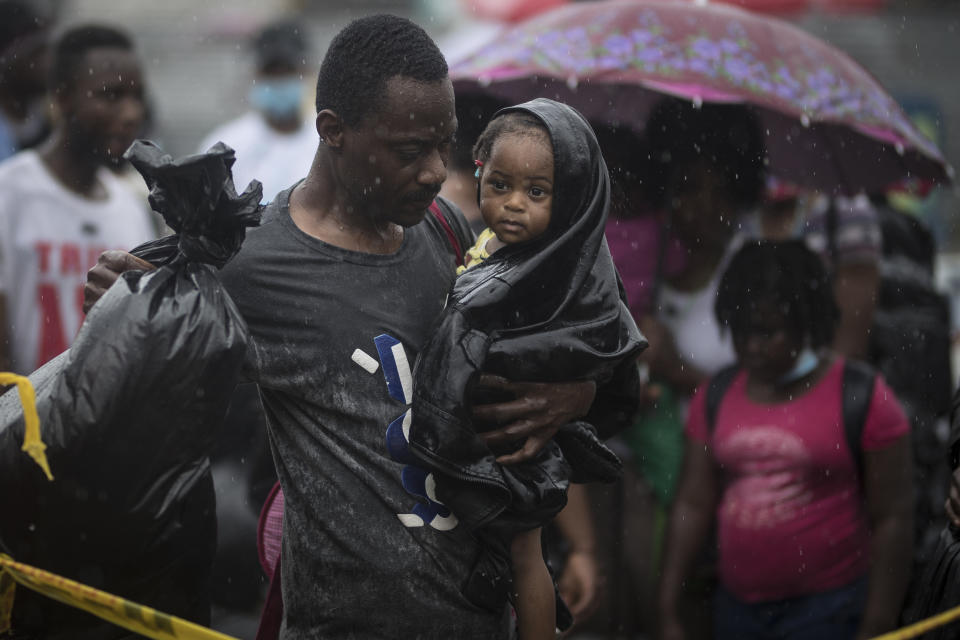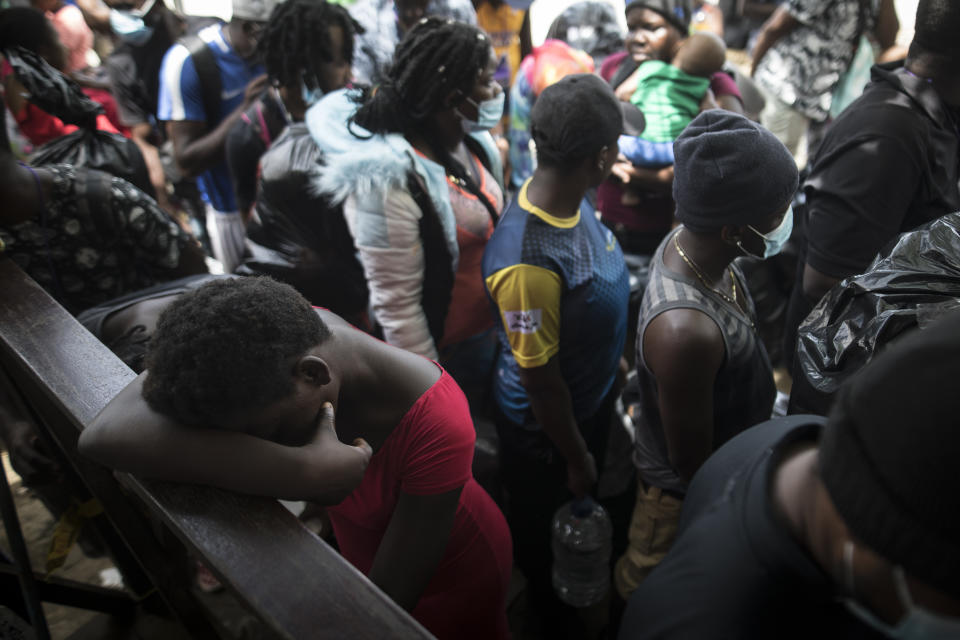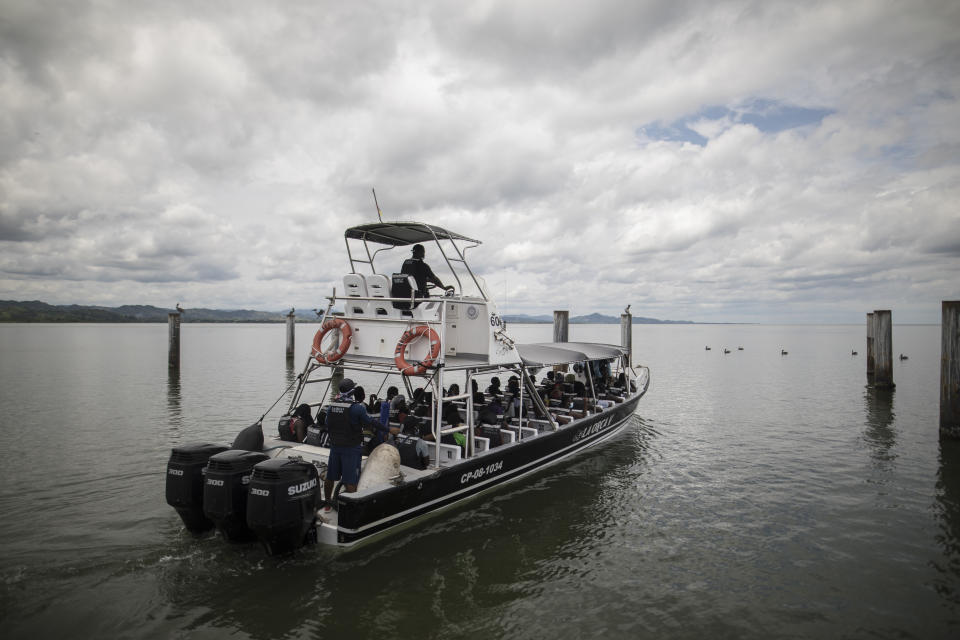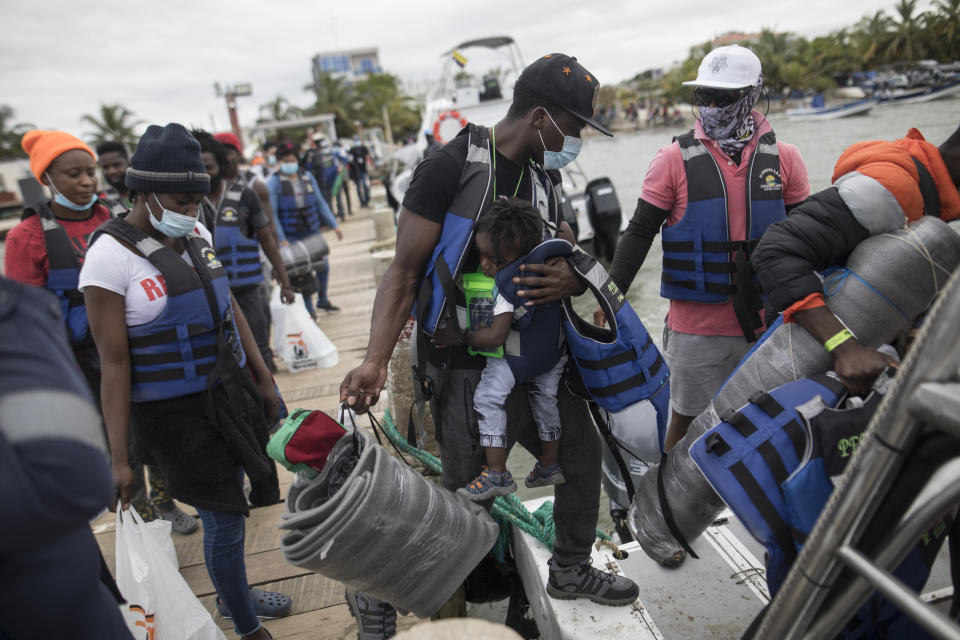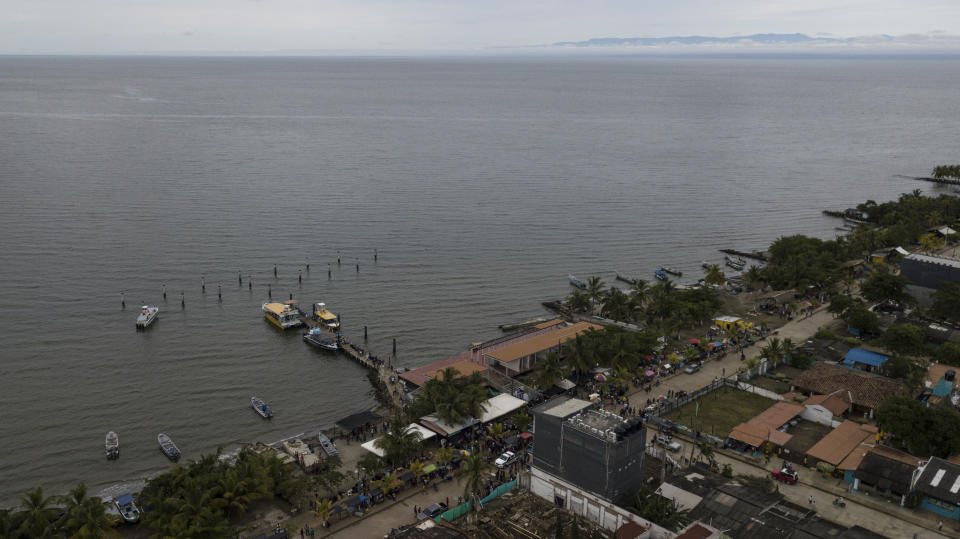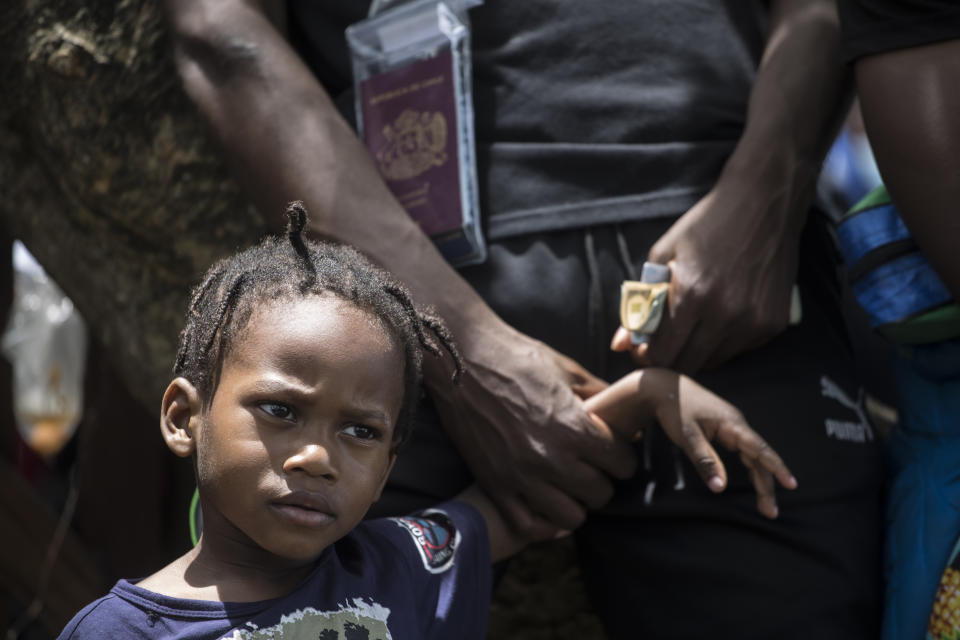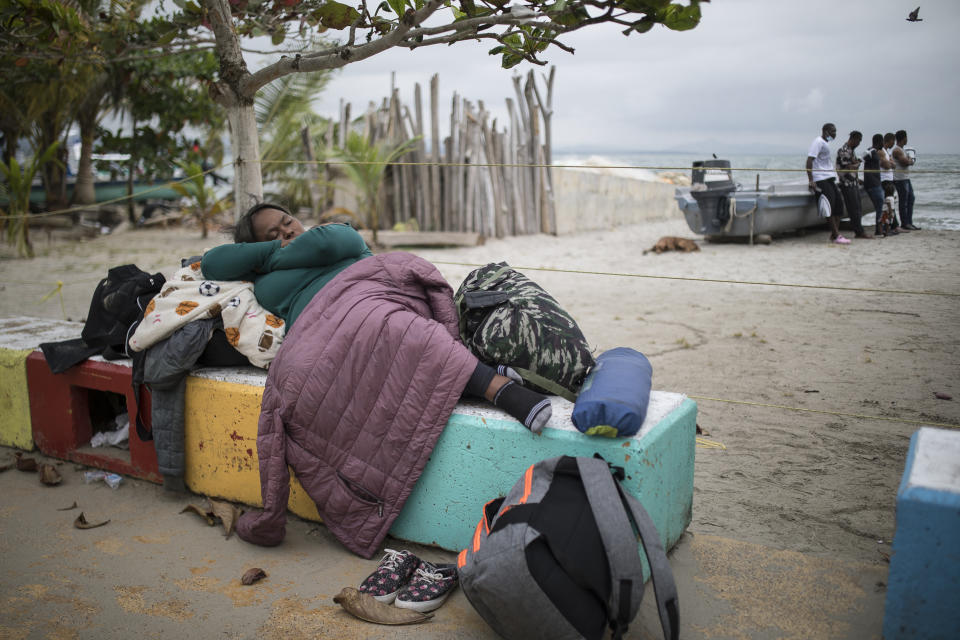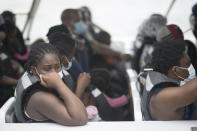Colombia coastal city crowded with African, Haitian migrants
NECOCLI, Colombia (AP) — A small city on Colombia's Caribbean shore is being crowded with migrants from Haiti, Africa and Cuba making what they hope will be a journey toward the United States.
Local official estimate more than 10,000 migrants have massed recently in Necocli, a city of some 20,000 people better known for its beaches, coconuts and burbling mud volcanos. It has become a bottleneck on the global migrant trail that winds through South and Central America, and on to Mexico and then the U.S. southern border.
Necocli residents say they have never seen so many migrants and city authorities have declared a “public calamity” because of water shortages caused by the additional demand from the migrants. Colombian ombudsman Carlos Camargo on Thursday visited the city's docks where boats depart to verify the humanitarian situation of the thousands of migrants.
“I make a call to my counterparts in other countries to carry out joint actions to confront this problem,” he told The Associated Press.
For many migrants, the journey runs from the Ecuadorian border through Colombia to Necocli, where ferries carry people across the Gulf of Uraba to the even smaller border town of Capurgana — and then into a dangerous, roadless expanse of Panama known as the Darien Gap.
But the ferries can carry only about 750 people a day — half of the 1,500 a day that have been arriving of late. The ferries also sometimes shut down on weekends or due to bad weather.
So the migrants wait, some renting rooms in cheap tourist accommodations, others sleeping on the beach. When day comes, they line up — sometimes with children in arms — in hopes of buying the $50 ferry ticket.
“I am here in search of a better life, a better job,” said Rijkaard Samedy, a 27-year-old Haitian who, along with his spouse and son, spent five years among the burgeoning Haitian population in Chile. He said they decided to head north because they felt discriminated against in the South American nation.
Colombia's government Defense of the People agency says at least 33,000 migrants so far this year have passed into Panama, most of them originally from Haiti, Cuba, Senegal and Ghana. Others from Somalia, Guinea, Congo and Burkina Faso have passed through as well.
That's a sharp rebound from last year, when pandemic restrictions reduced mobility for locals and migrants alike.
Many head first to South America, where some countries sheltered Haitians after a 2010 earthquake devastated that country. Some, like Samedy, eventually look north — especially after the pandemic squeezed regional economies.
The trek is dangerous and Colombian authorities have identified human trafficking networks operating in the region. Migrants are both aided and preyed upon as they make their way from the Darien through Central America and then Mexico. Rapes and robberies are often reported.
Monsignor Hugo Torres said a family with seven children arrived in Necocli this week. Some migrants are pregnant. “They have no idea what danger awaits them in the Darien,” he said.
The number of Haitians reaching Mexico, the last stop before the U.S. border, appears to have increased significantly this year. Those requesting asylum in Mexico — one measure of their presence — mounted to 9,327 through June, compared to annual totals of less than 6,000 the past two years.
Large numbers of Haitians wait in lines each day in the southern Mexican city of Tapachula near the Guatemalan border as they try to regularize their status before continuing north. Their numbers have swelled in northern Mexico as well, especially in Tijuana and Ciudad Juarez.
While many entered Colombia illegally, officials have made little effort to deport them. Immigration officials have said it would be too costly to fly so many home.
With a bag on his shoulder and sweating under the hot sun, 58-year-old Cuban Esteban Martínez waits to get on a small boat in Necocli to take him on the next step toward Panama and ultimately the United States.
Martínez began his journey in February 2019 when he left Cuba in search of the “American dream.” He crossed Guyana and Suriname, where he worked in a gold mine for longer than he had planned because of the COVID-19 pandemic. A couple of months ago he resumed his journey, arriving in Colombia from Ecuador.
“The focus of all of us is to climb that hill and get to Panama and then up to the United States," said Martínez, who is traveling with his wife and 11 other Cubans. "I think it’s time; there is no other way.”
Dominika Arseniuk, director in Colombia for the Norwegian Council for Refugees, said it's urgent that authorities in Colombia and Panama to work together on dealing with the crisis.
Samedy, the Haitian said he hopes U.S. President Joe Biden will set policies that help migrants, saying he sees no way of returning to Haiti, which is embroiled in political, economic and health crises.
“What is happening in my country is very complicated. The president wasn't safe,” he said, alluding to the recent assassination of Jovenel Moïse.
___
Suárez reported from Bucaramanga, Colombia.

 Yahoo Finance
Yahoo Finance 